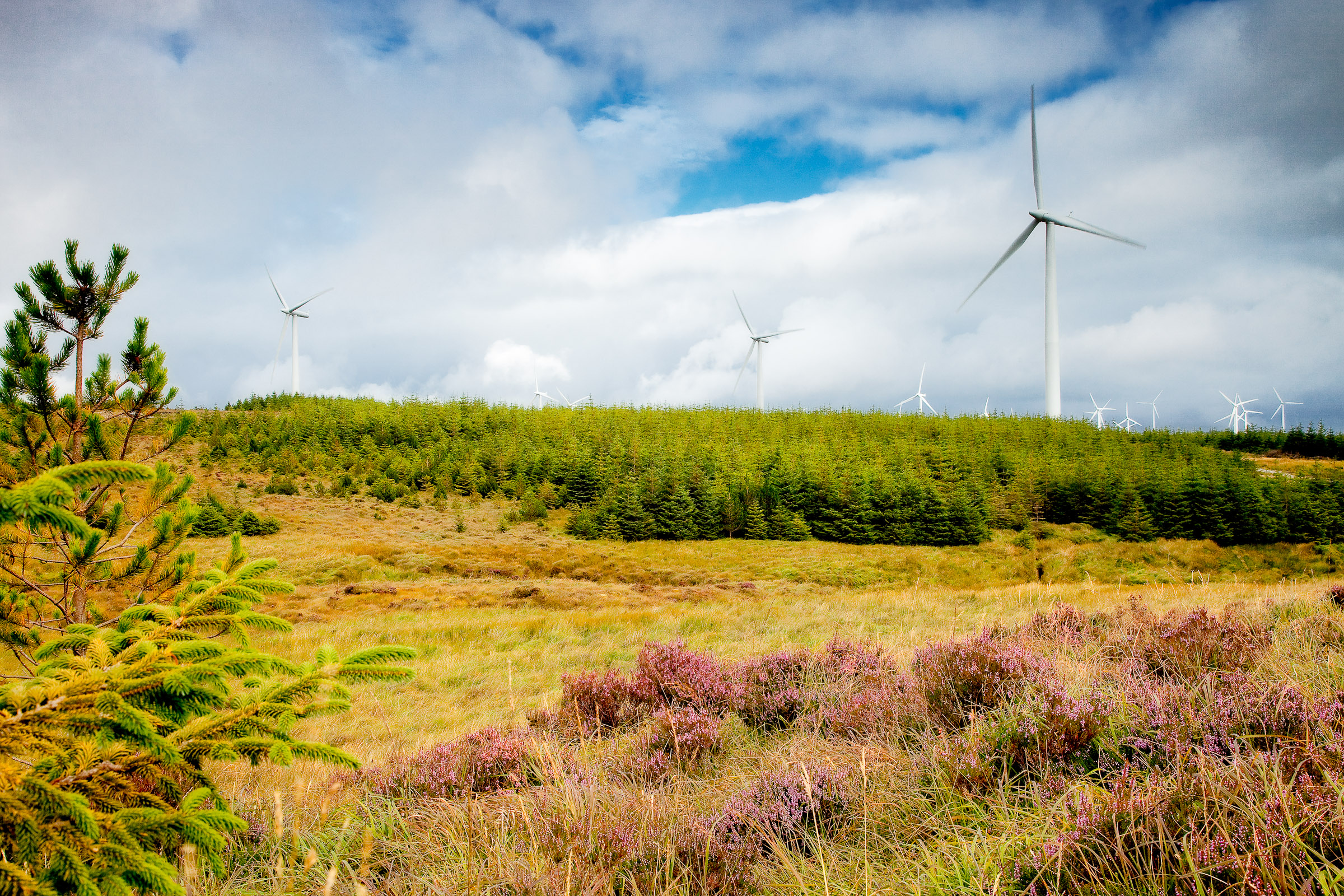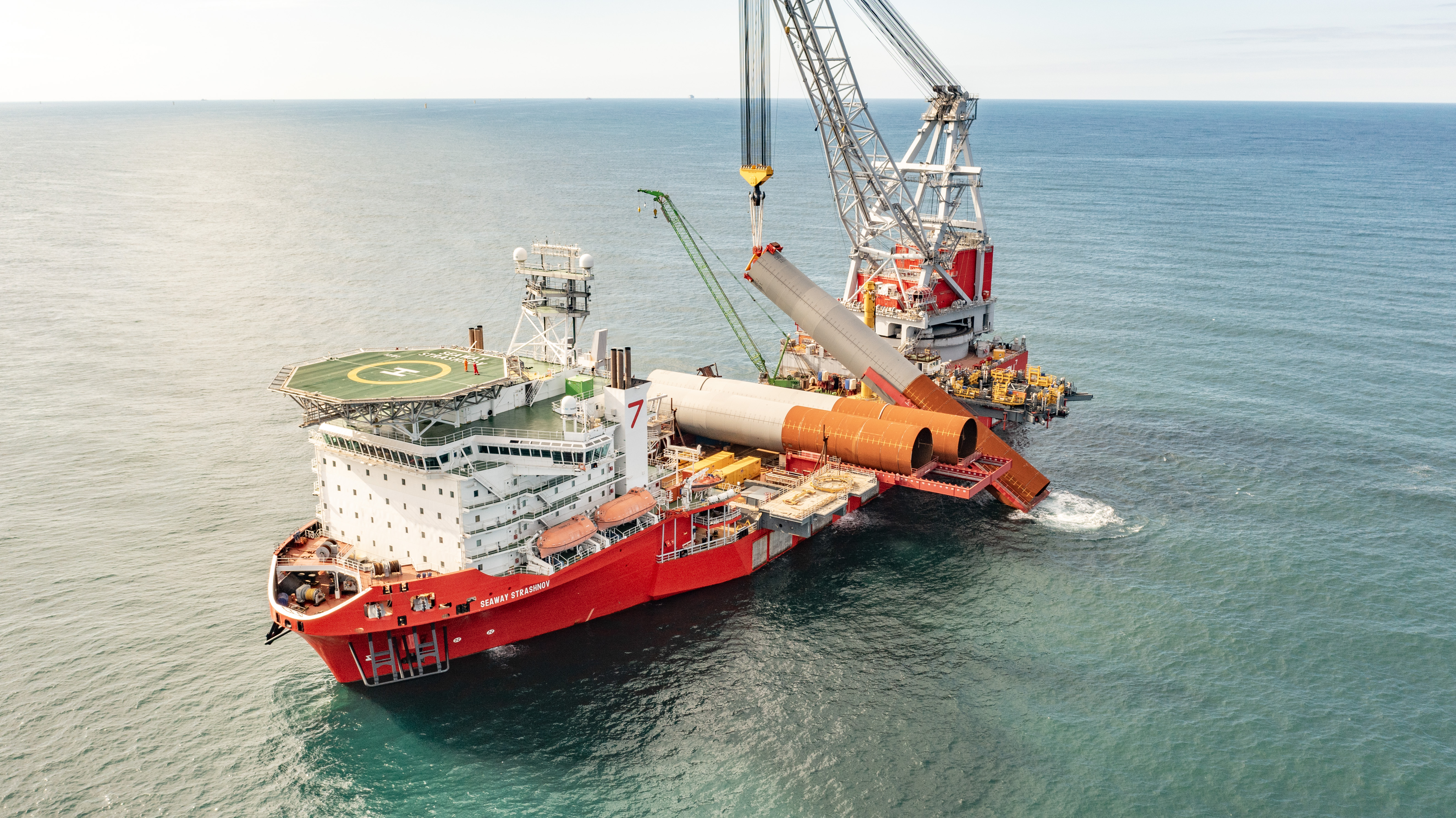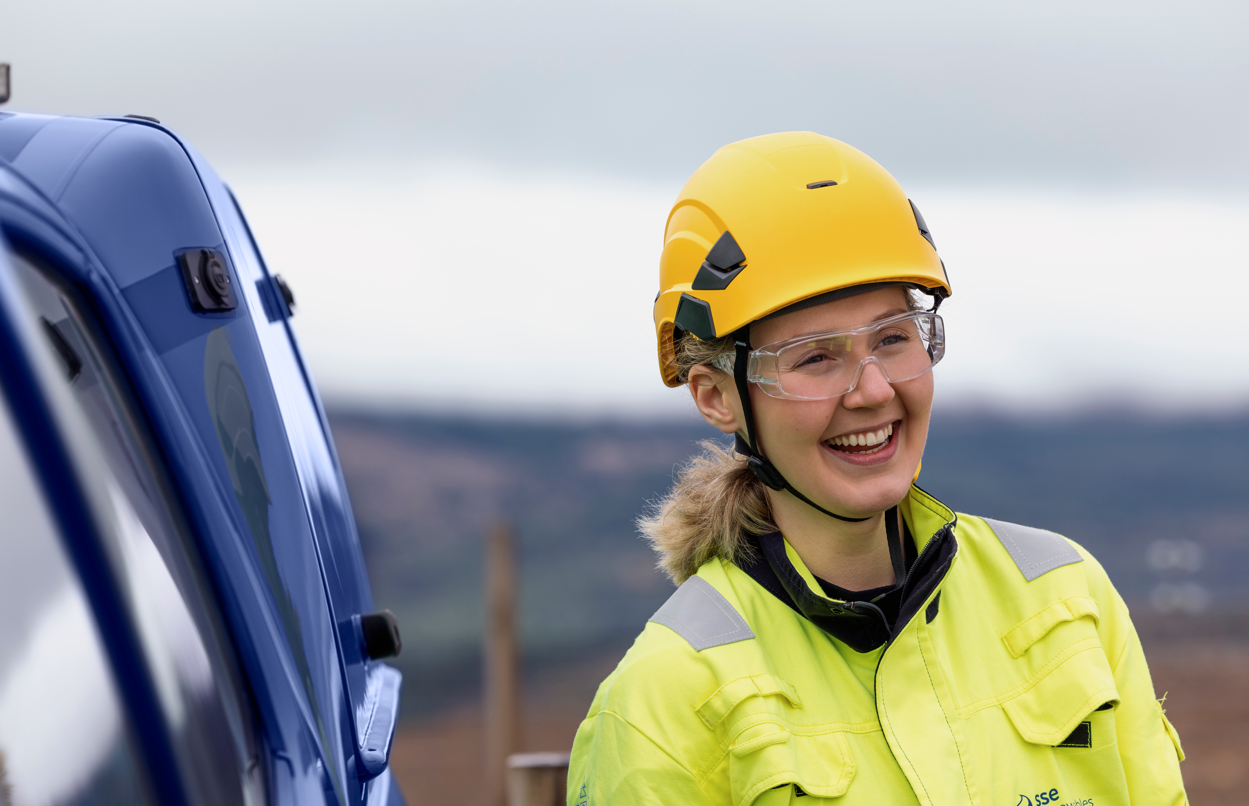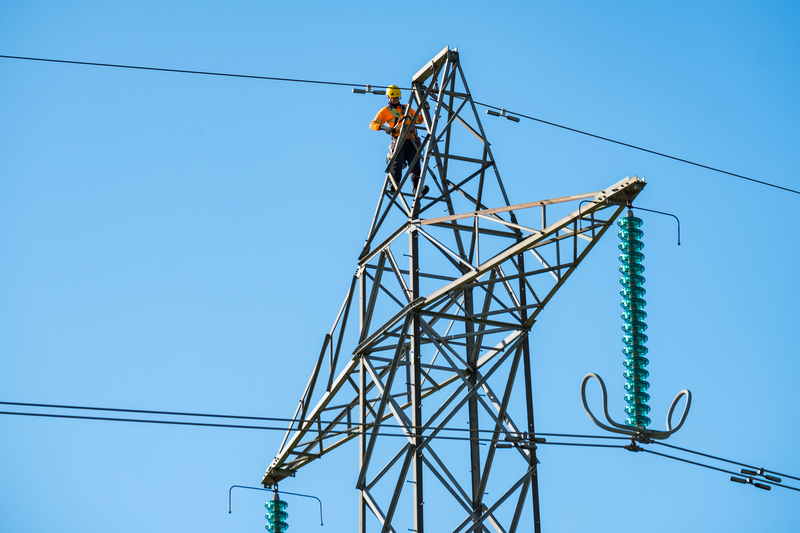We're SSE.
Our vision is to be a leading energy company in a net-zero world. As one of the UK and Ireland’s leading generators of renewable energy and one of the largest electricity network companies in the UK, sustainability and climate action are at the core of our business strategy.
In 2023-2024, our energy generation mix was 47% renewables (including onshore wind, offshore wind and hydro power) and 53% non-renewable sources (primarily our gas power stations). We are committed to being operationally net zero by 2050, measuring and reporting on our science-based targets for carbon reduction and aiming to cut 80% of our carbon emissions by 2030 from a 2017/18 baseline.
We develop, own and operate infrastructure to support and accelerate the net-zero transition. This includes onshore wind, offshore wind, hydro power, electricity transmission and distribution grids, alongside provide energy products and services for businesses.
We’re currently investing £20.5 billion to 2027 in critical energy infrastructure, electricity networks and flexible power generation. But we're just getting started. We want to invest billions more, supporting thousands of jobs and accelerating the energy transition. Actions, not ambitions, will secure our energy future.
SSE in numbers
Investing
Supporting over
Generating over
Developing

Investing £20.5bn in homegrown energy
As the UK and Ireland’s clean energy champion, we’re investing £20.5bn to 2027 as part of our Net Zero Acceleration Programme Plus. We expect to allocate ~54% into networks, ~34% into renewables, and ~12% into other businesses, including gas and low carbon flexible generation technologies.
It’s time to be bold, and that’s why we’re providing the practical solutions to help deliver a decarbonized energy system, whilst also reducing the carbon intensity of our own emissions.
Find out more about our investment plans.

Building the world's largest offshore wind farm
Along with our joint venture partners, Equinor and Vårgrønn, we’re building the largest offshore wind farm in the world at Dogger Bank in the North Sea, more than 130km off the North East coast of England.
Dogger Bank will be delivered in 3 phases, each with an installed power generation capacity of 1.2GW. Once all phases are complete and operational, Dogger Bank will have an installed capacity capable of powering up to 6 million homes annually*!
Find out more about our offshore wind technology.

Delivering and supporting thousands of jobs
We employee almost 14,000 talented and skilled people, and we’re proud to be a ‘Real Living Wage’ and a ‘Living Hours’ employer. The transition to a net zero world brings with it lots of new opportunities for both the existing workforce and new entrants.
As part of this transition from high-carbon activity, we expect to support thousands of new jobs every year directly and indirectly, ensuring the benefits of net zero are shared by workers.
We were the first company in the world to publish a Just Transition Strategy, designed to guide our decisions and actions as we transition towards net zero.
Find out more about our Just Transition, and to find out more about the type of roles available and for current vacancies, visit our careers page.

Transforming the grid
Our networks businesses play a critical role in the transition to a net zero future, by developing, building, maintaining and operating a low-carbon energy network which supplies electricity to communities, homes and businesses across the country.
We distribute power directly to 3.9 million homes and businesses across central southern England and north of Scotland, keeping our customers connected to the grid.
We’re also responsible for the electricity transmission network in the north of Scotland, which consists of underground and subsea cables, overhead lines and electricity substations. We cover over a quarter of the UK’s land mass, and cross some of the most challenging and extreme terrain.
Find out more about SSEN Distribution and SSEN Transmission.
Our strategy in action
Find out more about our technologies
Our technologies*6 million homes powered per annum based on Typical Domestic Consumption Values (Medium Electricity Profile Class 1, 2,900kWh per household; OFGEM, January 2021), typical 55% wind load factor and projected installed capacity of 3.6GW.
Click here to see the top 5 global offshore wind projects under construction, verified by 4C Offshore, a TGS Company.
Our science-based carbon targets
SSE measure and reports progress annually against interim science-based targets to reduce greenhouse gas ("GHC") emissions which are in line with the goals of the Paris Agreement to limit global warming to 1.5°C above pre-industrial levels (also known as the ‘power sector 1.5°C’). Our targets, which are verified by the Science-Based Target Initiative (“SBTi”), are considered ‘science-based’ if they are in line with what the latest climate science deems necessary to meet the goals of the Paris Agreement.
Greenhouse gas emissions are classified into three scopes:
- Scope 1: Electricity generation carbon emissions
- Scope 2: Electricity consumption in operational and non-operational buildings and distribution losses
- Scope 3: Gas sold, upstream emissions from extraction, refining and transport of raw fuels purchases, SHE Transmission losses, joint venture investments and business travel.
| Target | Unit | 2017/18 | 2021/22 | 2022/23 | 2023/24 | Target | Progress against target |
Reduce the GHG intensity of scope 1 GHG emissions by 80% by 2030, from a 2017/18 base year | gCO2e/kWh | 307 | 259 | 254 | 205 | 61 | 33% reduction in GHG intensity since 2017/18 |
Reduce absolute scope 1 and 2 GHG emissions by 72.5% by 2030 from a 2017/18 base year | MtCO2e | 11.06 | 6.24 | 6.52 | 4.81 | 3.04 | 56% reduction in absolute scope 1 and 2 GHG emissions since 2017/18 |
Reduce absolute GHG emissions from use of products sold by 50% by 2034 from a 2017/18 base year | MtCO2e | 2.53 | 2.29 | 2.16 | 2.01 | 1.27 | 21% reduction in GHG emissions from gas sold since 2017/18 |
Engage with 50% of suppliers by spend to set an SBT by 2024 | % | 0 | 48 | 51 | 51 | 50 | 51% of SSE's suppliers (by value) that set or committed to set their own science-based targets through the SBTi |
SSE remains on track to achieve its SBTi-approved target to reduce Scope 1 GHG emissions intensity by 80% between 2017/18 and 2030. GHG emissions intensity is the amount of GHGs released per unit of electricity generated. It's expected that SSE's Net Zero Acceleration Plus programme will develop and connect the renewables capacity which will contribute to a reduction in the Scope 1 GHG intensity by 2030.
SSE's total Scope 1 and 2 GHG emissions combined were 4.81MtC02 e in 2023/24 - this is a reduction of 56% from the 2017/18 base year of SSE's SBTi-approved target to reduce absolute Scope 1 and 2 GHG emissions by 72.5% by 2030.
SSE's Scope 1 and 2 GHG emissions have reduced compared to the base year 2017/18, reflecting lower output from gas power stations and the closure of SSE's last coal-fired power plant in March 2020.
GHG emissions from gas sold to customers, which contributed around 45% of SSE's Scope 3 emissions in 2023/24, decreased by 6.9%. This was a result of lower market demand reflecting increased market prices. This means GHG emissions from gas sold have reduced by 21% from 2017/18. SSE's SBTi-approved target is to reduce GHG emissions from gas sold by 50% between 2017/18 and 2034.
Decarbonising essential gas-fired generation and pioneering low-carbon technologies
While renewable generation will do the heavy lifting to decarbonise the UK's power system and is at the core of SSE's strategy, the UK continues to require flexible gas-fired power stations on the grid to maintain security of supply in periods of low renewable generation output.
SSE Thermal is fully focused on providing vital flexible and reliable generation in a way that is consistent with SSE Group's Paris-aligned, science-based targets and its commitment to achieving net zero by 2050.
SSE is already making major progress in this regard, closing its last coal-fired power station in 2020, five years ahead of the UK Government’s 2025 deadline, and building a super-efficient power station at Keadby 2 in North Lincolnshire. The power station has an efficiency of around 63 per cent, that is the percentage of the total energy content of a power plant's fuel that is converted into electricity, making it the most efficient plant of its type in the UK and Europe - and one of the most efficient in the world. Find out more about Keadby’s SGT5-9000HL heavy duty gas turbine on the Siemen’s Energy website. It entered into commercial operations in March 2023.
The station represents a vital next step in the UK’s journey to net zero, with plans already in place for the next generation of low-carbon power stations situated at Keadby. In addition, work is underway to explore how to decarbonise the 893MW Keadby 2 further, with the potential to blend hydrogen into the plant as a first step.
SSE has publicly stated it will not build any further power stations without a clear route to decarbonisation, and the company is now focused on decarbonising its gas-fired power generation through exciting opportunities in carbon capture and storage (CCS) and hydrogen solutions, which we believe will allow flexible power stations to continue providing large-scale generation in a net zero world. Find out more.


